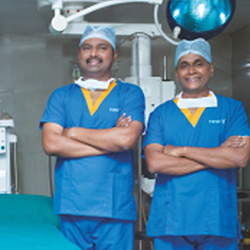Pediatric orthopedics is a specialty that focuses on the orthopedic issues of children. Pediatric orthopedic surgeon are those experienced professionals in treating the musculoskeletal (bone, joint or muscle) issues in a child. Usually, children’s musculoskeletal issues are different from those of the adults.
The common pediatric problems are
- 1. Fractures
- 2. Clubfoot
- 3. Congenital hip dislocation
- 4. Cerebral Palsy
- 5. Scoliosis
Fractures
Paediatric fractures are different from adult fractures. The treatment of these fractures is also different as the bones in children are more flexible than adults and they have the capacity to heal faster too. Hence many fractures in children can be managed conservatively with casting alone.
Club Foot
Club foot is the abnormal position of the foot which appears at birth or during childhood. A child with club foot will have misshaped foot. It will cause him/her to turn the ankle inward and also affects proper way of walking. Both feet are affected in most of the cases. But, in such cases, one foot is more affected than the other.
Cerebral Palsy
Cerebral palsy is a group of chronic disorders that causes damage or abnormalities to the brain. It affects the central nervous system and changes the motion of muscles. It can be mild, moderate and severe. As a result, the baby will face problems while learning to roll over, crawl, walk, or sit. It can start before, during or after birth in the first years of life.
Congenital Hip Dislocation
Congenital hip dislocation or developmental dysplasia is the abnormal formation of the hip joint. In this condition, the ball on top of the thighbone will not be held tightly in the socket. The pediatricians examine every new born baby in order to find whether the baby has the problem of hip dislocation which can be corrected from that stage itself.
Scoliosis
Scoliosis is a condition that affects the growing spine of children and adolescents. It is an exaggerated lateral curvature of the spine. Generally, the spine will look like a straight line down the middle of the back. When the person or the child gets affected by scoliosis, the spine will look like the alphabet “c†or “sâ€. It can result from a variety of causes.










